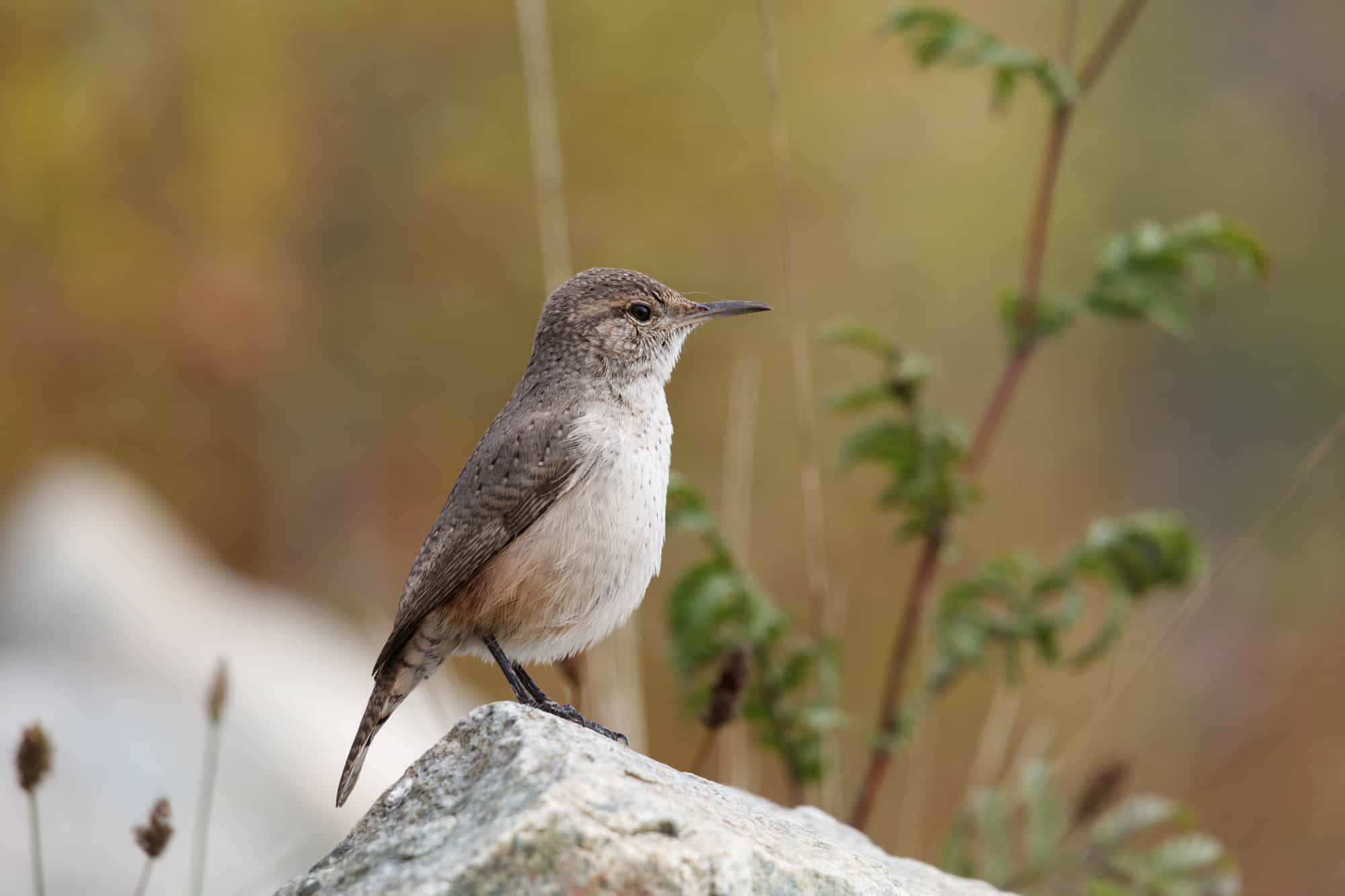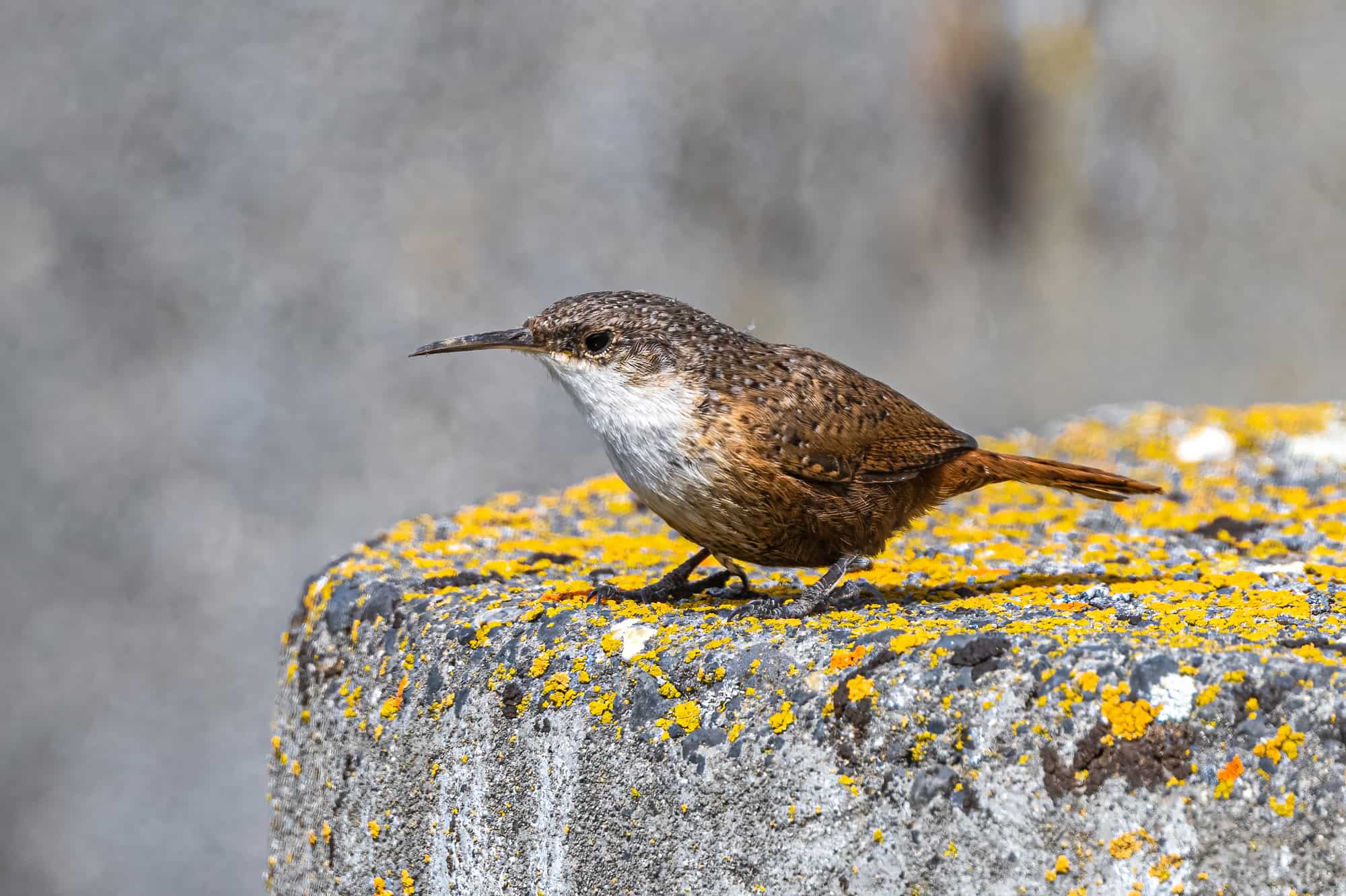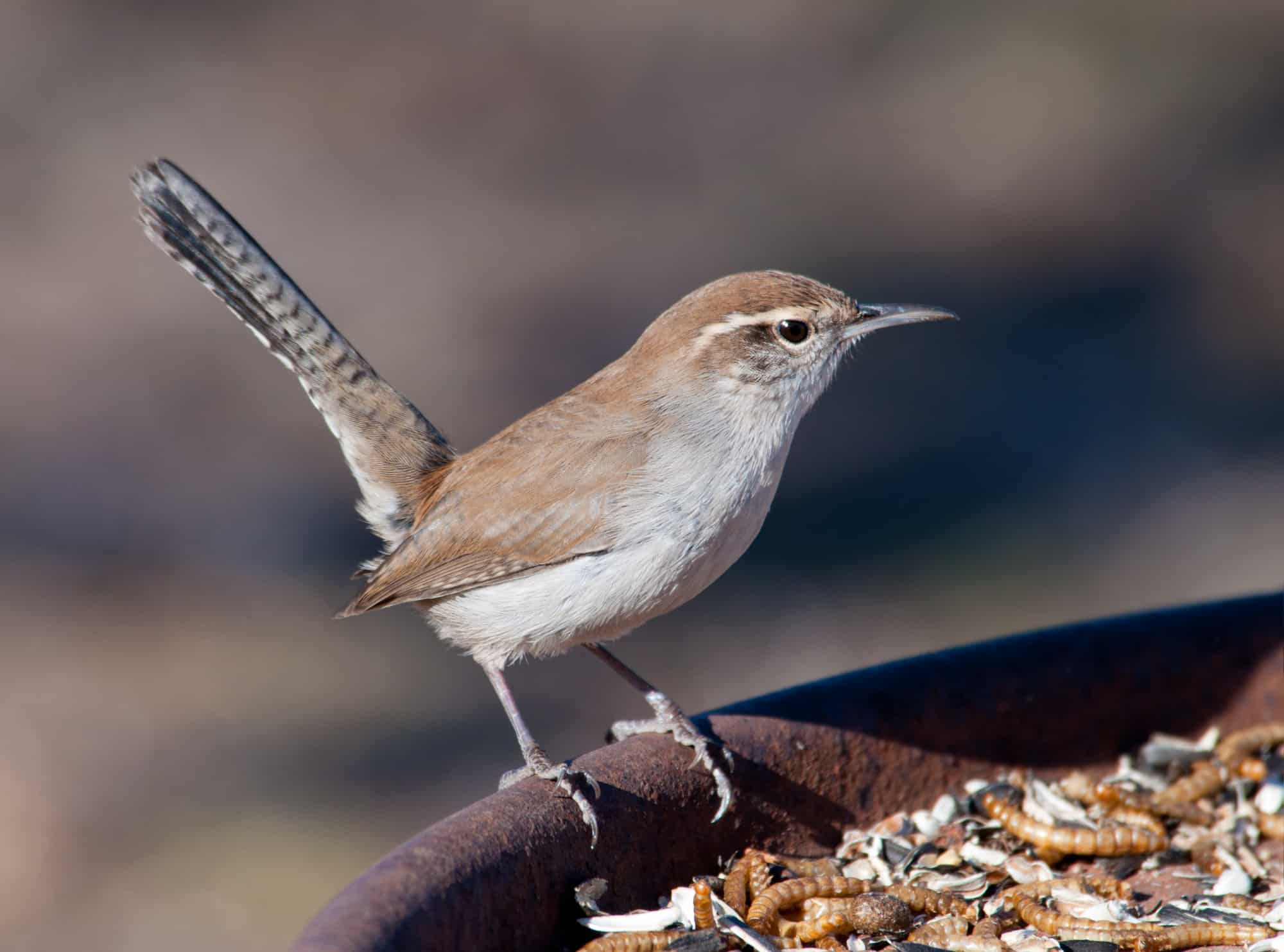Wrens belong to an almost exclusively new world family of 88 birds, Troglodytidae, of which nine are native to North America.
The only wren species belonging to the old world is the Eurasian wren. And of those nine North American wrens, you have the opportunity to see seven in at least some part of Utah.
Some are common and widespread, whereas others are rare in the Beehive State. Let’s take a look.
All measurements are via the Cornell Lab of Ornithology’s All About Birds, which also provides range maps, fun facts, identification tips, and more for all North American bird species.
Cactus Wren

- Campylorhynchus brunneicapillus
- Length: 7.1-8.7 inches
- Weight: 1.1-1.7 ounces
- Wingspan: 11 inches
Let’s start with Utah’s resident wren that you’re least likely to see in Utah unless you travel to the southwestern corner of the state and visit Red Cliffs National Conservation Area, Beaver Dam Wash National Conservation Area, or areas surrounding St. George.
Most of the cactus wren’s range occurs in a band along the U.S. border with Mexico, but other desert areas like those in southwestern Utah also fit the bill (bird pun not intended) for cactus wren habitat.
Users of eBird report frequent sightings along Lytle Ranch Road/Eardley Road, which runs through Beaver Dam Wash National Conservation Area in the very southwestern corner of Utah.
North America’s largest wren, the cactus wren is Arizona’s state bird. It’s a large bird with a spotted tan belly, black throat, and white and black striping along the face.
They have rounded tails, which when viewed from the front, show off alternating black and white sections.
Rock Wren

- Salpinctes obsoletus
- Length: 4.9-5.9 inches
- Weight: 0.5-0.6 ounces
- Wingspan: 8.7-9.4 inches
Now on to the wrens you’re more likely to see across Utah, starting with the smaller rock wren, a resident of dry, rocky areas across the North American West.
Rock wrens have light markings down their undersides with lightly spotted backsides. They lack much in extreme color, with their muted tan and brown coloration giving them great camouflage against Utah’s dry rocky areas. The rock wren has a long, thin bill.
Rock wrens are spread across the state, including in well-trafficked outdoor places like Antelope Island or Zion National Park.
You may hear rock wrens before you ever see them. When you hear their call, it’s a good sign to start scanning nearby rocks to get a sight of one.
Rock wrens will migrate from much of Utah, but southeastern and northwestern Utah may hold rock wrens year-round.
Canyon Wren

- Catherpes mexicanus
- Length: 4.5-6.1 inches
- Weight: 0.3-0.7 ounces
- Wingspan: 7.1-7.9 inches
When looking at a list of canyon wren sightings, such as on eBird, it’s not hard to quickly pick up a pattern in the state’s deep canyons and steep river walls.
Most sightings of this species, a year-round resident of Utah, follow rivers like the San Juan River and Colorado River or canyons without rivers, where they can be found along canyon walls.
They are nearly state-wide, except for flat, open areas like those in the West Desert.
Weighing as little as a third of an ounce, these little wrens have pretty markings. They have a large white patch from the bill to the chest, where their rich red-brown color begins, dotted with darker marks.
Their grayish backs are speckled with white and they have reddish tails lined with black bars.
Their song is a series of notes that spiral lower and slower as it goes along, almost like something out of a cartoon:
House Wren

- Troglodytes aedon
- Length: 4.3-5.1 inches
- Weight: 0.3-0.4 ounces
- Wingspan: 5.9 inches
The house wren is a common wren across the United States from the Atlantic shores to the Pacific coast.
Utah isn’t their most frequented state, but there are plenty of sightings during the breeding season, mostly throughout the valley. They nest in backyards, forests, and parks, where they are likely to be encountered by backyard birders, hikers, and campers. Even if you haven’t seen one, you may recognize their song:
House wrens are mostly brown birds with intermixed white coloring. The house wren’s bill is notably shorter than the first three wrens on this list.
Come the fall, house wrens will head south to areas of the southern United States, Central America, and South America, where they’re year-round residents.
Partners In Flight estimates a worldwide population of 190 million house wrens. The house wren’s expansion in certain areas has caused some serious problems for the next bird on our list, however.
Bewick’s Wren

- Thryomanes bewickii
- Length: 5.1 inches
- Weight: 0.3-0.4 ounces
- Wingspan: 7 inches
Bewick’s wren is a beautiful brown and white wren with a distinct white eyebrow marking. They have white and gray undersides with brown heads, backs, and wings.
It’s a mostly western bird at this stage in history, with the house wren’s expansion a detriment to Bewick’s wrens. All About Birds states that house wrens, which remove eggs from cavity nests and have expanded throughout the continent with the addition of more nest boxes, have caused Bewick’s wren numbers to drop.
According to NatureServe Explorer, Bewick’s wren used to be widespread from Kansas to Pennsylvania and the Appalachian Mountains, but in the past 50 years, the eastern population has been almost completely wiped out.
Fortunately, they’re still fairly common in parts of the western U.S., including much of Utah. They inhabit dry scrublands and may even build a home in backyards or local parks.
Some of the state’s Bewick’s wrens will migrate, though many are year-round residents, especially in central to southern Utah.
Pacific Wren

- Troglodytes pacificus
- Length: 3.1-4.7 inches
- Weight: 0.3-0.4 ounces
- Wingspan: 4.7-6.3 inches
Pacific wrens are minute birds with a song that’s anything but. Take a listen:
They’re brown almost all over with black striping on the tail and wings as well as some lighter speckles near the wings. They have a light tan stripe where an eyebrow would be.
Pacific wrens, true to their name, are most common closer to North America’s western coast from Alaska down to California, but they do have a rather limited range in northern Utah, where they inhabit tree-covered landscapes like those in Utah’s national forests.
Users of eBird in the southwestern corner of the state also report sightings each year in Zion National Parks’ Zion Canyon.
Marsh Wren

- Cistothorus palustris
- Length: 3.9-5.5 inches
- Weight: 0.3-0.5 ounces
- Wingspan: 5.9 inches
Marsh wrens live in wetlands, where you’re most likely to see them hanging onto cattails or other vegetation, with a vertical brown tail setting them apart from sparrows or other marsh birds.
Marsh wrens throughout North America have several regional differences. The eastern marsh wren is a warmer brown with more color than the western marsh wren, which has a relatively unmarked underside. It has a brown back and sides with some lighter markings along the wings and back except on a plain brown shoulder area.
According to All About Birds, western marsh wrens also have a larger catalog of more complex songs than their eastern relatives.
You can hear a sample from Utah’s Bear River Migratory Bird Refuge here:
You aren’t likely to find many marsh wrens in southeastern Utah. They’re year-round residents of central to northern Utah as well as the southwest corner of the state, though some central Utah birds will leave each fall and return in the spring.
More To Explore
Wrens are certainly not the only birds in Utah’s forests, marshes, and deserts.
Luckily, Wild Bird Scoop has you covered with lists of Utah’s sparrows, ducks, hummingbirds, owls, hawks, and woodpeckers, as well as a general list of some of the Beehive state’s most popular birds.
Frequently Asked Questions
Are There Winter Wrens in Utah?
There are also occasional winter wren sightings in Utah, mostly around the state’s main metropolitan area. And when one is sighted, it’s usually seen consistently for a brief period before moving on.
For example, eBird users consistently reported one at Utah Lake State Park in 2018 and 2019, but one hasn’t been seen there since. In 2023, there were numerous reports of one at Mueller Park in Davis County.

